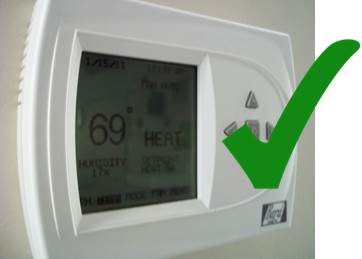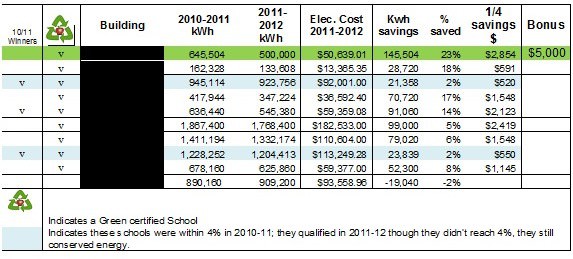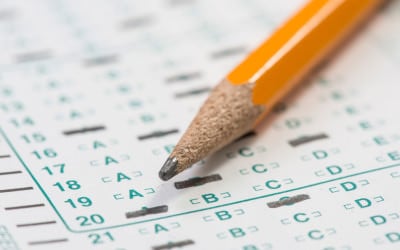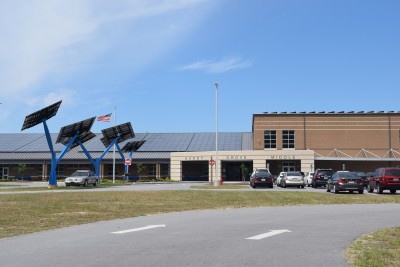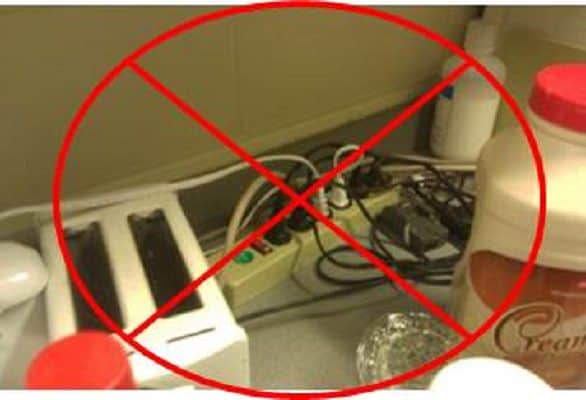

What do you do with the savings from conserving utility use to sustain the cycle of conservation?
Cumberland County’s Go ‘Green’ Initiative is a data-driven, behavioral-change program that is based on four principles of sustainability:
- Energy and water conservation
- Pollution control
- Solid waste reduction and recycling
- Awareness and education
Data is regularly gathered and analyzed from our 86 schools and support buildings. Corrective measures such as retrofits, updates, and cost-saving state-of-the-art technology is implemented over time and within budget allowances. Individual schools have the responsibility to introduce and continue energy saving measures; as well as educating their staff and students on the conservation principles we have adopted.
The roots of the Cumberland County Schools Go ‘Green’ Initiative began as far back as 1996 when schools were not feeling the squeeze as they are in today’s economic environment. Forward-thinking staff in facility management saw the possibility of saving money. The conservation process was born by looking for newer and more sustainable technologies for lighting, HVAC, and plumbing. Old equipment was evaluated for consumption levels and, where feasible, were replaced, retrofitted, or refitted.
Fast forward to 2009, the economic outlook was bleak and one finds this forward-thinking person meeting with another from the nonprofit Sustainable Sandhills. The result? A sustaining partnership was forged. Federal recovery monies were available and energy interns were hired in the counties that make up Sustainable Sandhills purview. Those interns took stock of how school systems could conserve and develop tools and instruments that are today the basis of our Green Schools program.
So how does a program receive the cooperation of 94 buildings with 5,000 employees and 50,000 plus students act on these conservation measures? We provide strategies to schools showing how they can conserve energy. Checklists are provided with strategies they can follow. We encourage independent thinking to develop strategies specific to particular schools. We also have an incentive program. We award those schools who have decreased their energy consumption by four percent in the past year based on the kilowatts conserved each year. Competition is fierce between schools to make sure they make the top ratings in conservation. Qualifying schools receive 25 percent of their energy savings. A bonus of $5,000 is also given to the four schools (two elementary, one middle, and one high) that can reduce their percentage kilowatt consumption the greatest. In this tight economic environment with shrinking budgets that can mean a lot to our schools.
Initially, many schools realized large paybacks, due to their initial efforts. Moving forward, those savings are more difficult to achieve. The winning schools are allowed to determine whether their award money will be used for instructional supplies or to support their Green Program. Other incentives are awarded to our custodial staffs. Many of our green teams are headed by our custodians. The custodians are physically present in the school, and often the best watchdog for energy conservation. Custodians from the schools that have received awards are awarded for their efforts through a lottery. Winning custodial staffs divide their incentive and use it as they will.
As we move forward building a more sustainable future for our students, we look for more strategies to ensure we don’t stray from the path we have chosen. As schools continue to reduce consumption, they will likely find it more difficult to sustain the high percentage of cost reduction to qualify for the award. Our Energy Department is continuing to look at ways to challenge the schools to save energy while making the rewards obtainable and significant. Just as we check our newest data, check off our latest goals, and continue to strategize, we must evolve our Go ‘Green’ Initiative program to answer more sustainable questions, hopefully creating a future for our students.


